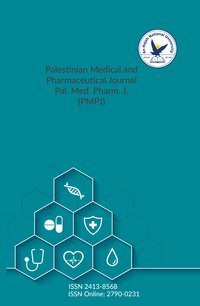The Impact of Endourological Procedures on Uroflowmetry Parameters: A Prospective Study
Authors:
Article info
2024-06-17
2024-08-27
2024-10-04
131 - 136
Keywords
- Diabetes Mellitus
- Uroflowmetry
- Endourology
- Anesthesia
Abstract
Introduction: Endourological procedures are integral to urology, utilizing advanced tools for diagnosis and treatment. These interventions impact uroflowmetry, a key diagnostic tool for lower urinary tract symptoms. Anesthesia type influences both pain perception and uroflowmetry. This study aims to explore the relationship between endourological procedures and uroflowmetry parameters. Methods: A prospective cohort study conducted at An-Najah National University Hospital included patients undergoing endourological procedures between May and December 2023. Uroflowmetry was performed before and after procedures, assessing peak flow rate (PFR), voided volume, time to maximum flow, flow time, and voiding time. Statistical analysis was performed using SPSS version 21. Results: 49 patients met our inclusion criteria, and the median age for study participants was 49 years, with a body mass index (BMI) range from 18.5 to ≥30. Comorbidities included diabetes mellitus (20.4%) and hypertension (26.5%). Anesthesia modalities included general anesthesia (71.4%), local anesthesia (18.4%), and spinal anesthesia (10.2%). Postoperative uroflowmetry revealed a slight increase in median PFR from 16.0 ml/s (pre-op) to 18.0 ml/s (post-op), with a mean difference of +2.3 ml/s. Voided volume decreased from a median of 240.0 ml to 226.0 ml, with a mean difference of -5.6 ml. Time to maximum flow reduced from 9.0 s to 8.0 s, with a mean difference of -3.2 s. Flow time decreased from 34.0 s to 30.0 s, with a mean difference of -13.3 s. Voiding time also decreased from 44.0 s to 37.4 s, with a mean difference of -20 s. Importantly, diabetes mellitus significantly influenced urinary flow dynamics, with diabetic patients exhibiting a notable difference in pre-operative and post-operative median PFR compared to non-diabetic patients (p = 0.023). Conclusion: Endourological procedures have an impact on uroflowmetry parameters, with notable changes observed post-procedure. Diabetes mellitus emerges as a crucial factor influencing urinary flow dynamics, underscoring its importance in patient outcomes.
The Impact of Endourological Procedures on Uroflowmetry Parameters: A Prospective Study
المؤلفون:
معلومات المقال
2024-06-17
2024-08-27
2024-10-04
131 - 136
الكلمات الإفتتاحية
- Diabetes Mellitus
- Uroflowmetry
- Endourology
- Anesthesia
الملخص
Introduction: Endourological procedures are integral to urology, utilizing advanced tools for diagnosis and treatment. These interventions impact uroflowmetry, a key diagnostic tool for lower urinary tract symptoms. Anesthesia type influences both pain perception and uroflowmetry. This study aims to explore the relationship between endourological procedures and uroflowmetry parameters. Methods: A prospective cohort study conducted at An-Najah National University Hospital included patients undergoing endourological procedures between May and December 2023. Uroflowmetry was performed before and after procedures, assessing peak flow rate (PFR), voided volume, time to maximum flow, flow time, and voiding time. Statistical analysis was performed using SPSS version 21. Results: 49 patients met our inclusion criteria, and the median age for study participants was 49 years, with a body mass index (BMI) range from 18.5 to ≥30. Comorbidities included diabetes mellitus (20.4%) and hypertension (26.5%). Anesthesia modalities included general anesthesia (71.4%), local anesthesia (18.4%), and spinal anesthesia (10.2%). Postoperative uroflowmetry revealed a slight increase in median PFR from 16.0 ml/s (pre-op) to 18.0 ml/s (post-op), with a mean difference of +2.3 ml/s. Voided volume decreased from a median of 240.0 ml to 226.0 ml, with a mean difference of -5.6 ml. Time to maximum flow reduced from 9.0 s to 8.0 s, with a mean difference of -3.2 s. Flow time decreased from 34.0 s to 30.0 s, with a mean difference of -13.3 s. Voiding time also decreased from 44.0 s to 37.4 s, with a mean difference of -20 s. Importantly, diabetes mellitus significantly influenced urinary flow dynamics, with diabetic patients exhibiting a notable difference in pre-operative and post-operative median PFR compared to non-diabetic patients (p = 0.023). Conclusion: Endourological procedures have an impact on uroflowmetry parameters, with notable changes observed post-procedure. Diabetes mellitus emerges as a crucial factor influencing urinary flow dynamics, underscoring its importance in patient outcomes.
Since 2022
Cite Score (Scopus): 0.8
Time to First Decision: 3 Days
Submission to Acceptance: 45 Days
Acceptance to Publication: 64 Days
Acceptance Rate: 17%
Why should you
Publish With Us?
An-Najah National University
Nablus, Palestine
Nablus, Palestine
- P.O. Box
- 7, 707
- Fax
- (970)(9)2345982
- Tel.
- (970)(9)2345560
- (970)(9)2345113/5/6/7-Ext. 2628
- [email protected]
- EIC
- Prof. Waleed Sweileh
The Palestinian Medical and Pharmaceutical Journal (Pal. Med. Pharm. J.) © 2024 by An-Najah University, Nablus, Palestine is licensed under CC BY-NC 4.0
News and Views
